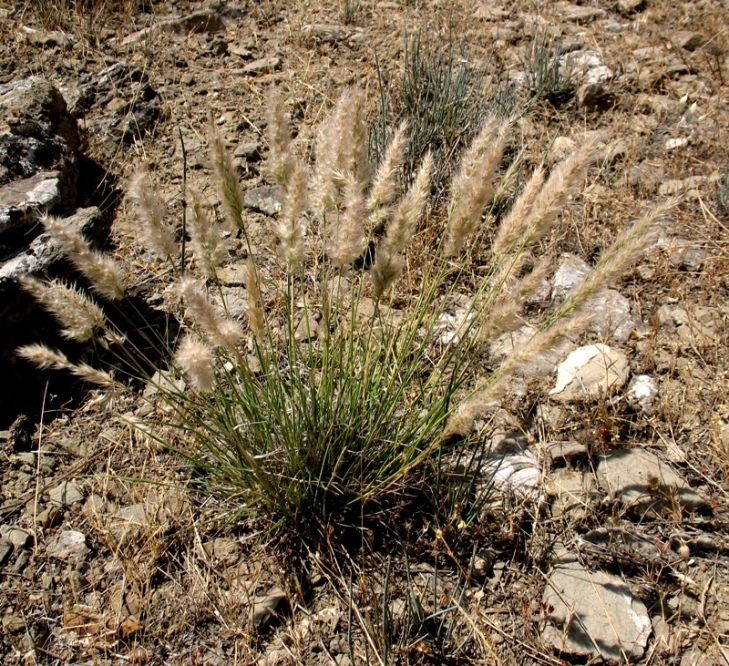Enneapogon persicus: Red Data Book of Armenia

VU* B 1 ab(iii) + 2 ab(iii)
Category. Vulnerable species. Only one sub–population is known. The extent of occurrence and the area of occupancy are less than 500 km2. The species faces decline of the extent of occurrence and the area of occupancy in Armenia caused by the changes in habitat conditions. Since the main area of distribution of the species is situated beyond the borders of Armenia the category of threat has been downgraded to VU. It was included in the first edition of the Red Data Book of Armenia under Category 2: Rare species. It is not included in the Annexes of CITES and that of the Bern Convention.
Description. Perennial herb forming a dense tuft. Stems erect, 15–40 cm. Inflorescence a dense spike–shaped panicle 4–9 x 1–3 cm. Spikelets 3–6–flowered, 8–14 mm long. Lemma with 8–9 curved, 10–13 mm long silvery pinnate–pilose awns.
Distribution. In Armenia it occurs only in Meghri (Araks river valley) floristic region. EOO is 70 km2, AOO is 24 km2. Locations are 4. Besides Armenia the species grows in Nakhichevan, Azerbaidjan, Spain, North Africa, Iraq, Iran, Middle Asia, Afghanistan, Pakistan.
Ecological, biological and phytocoenological peculiarities. Grows in lower mountain belt, at the altitudes of 490–900 meters above sea level, on dry, stony slopes, between the rocks, in the shibliak and phryganoid vegetation. Flowering in June, fruiting in July.
Limiting factors. Restricted extent of occurrence and area of occupancy, loss/degradation of habitats caused by the expansion of arable lands.
Conservation actions. No conservation actions. Necessary: establishment of new specially protected nature area in the surroundings of Agarak (Meghri region) settlement, monitoring of the population state.
Suggestions
 The Ministry of Environment sent a letter international partners to draw their attention to the real danger of environmental disasters as a result of Azerbaijan's large-scale aggression towards the territory of Armenia
The Ministry of Environment sent a letter international partners to draw their attention to the real danger of environmental disasters as a result of Azerbaijan's large-scale aggression towards the territory of Armenia
 Vicia pisiformis: Red Data Book of Armenia
Vicia pisiformis: Red Data Book of Armenia
 Vavilovia formosa: Red Data Book of Armenia
Vavilovia formosa: Red Data Book of Armenia
 Trigonella capitata: Red Data Book of Armenia
Trigonella capitata: Red Data Book of Armenia
 Trigonella astroides: Red Data Book of Armenia
Trigonella astroides: Red Data Book of Armenia












